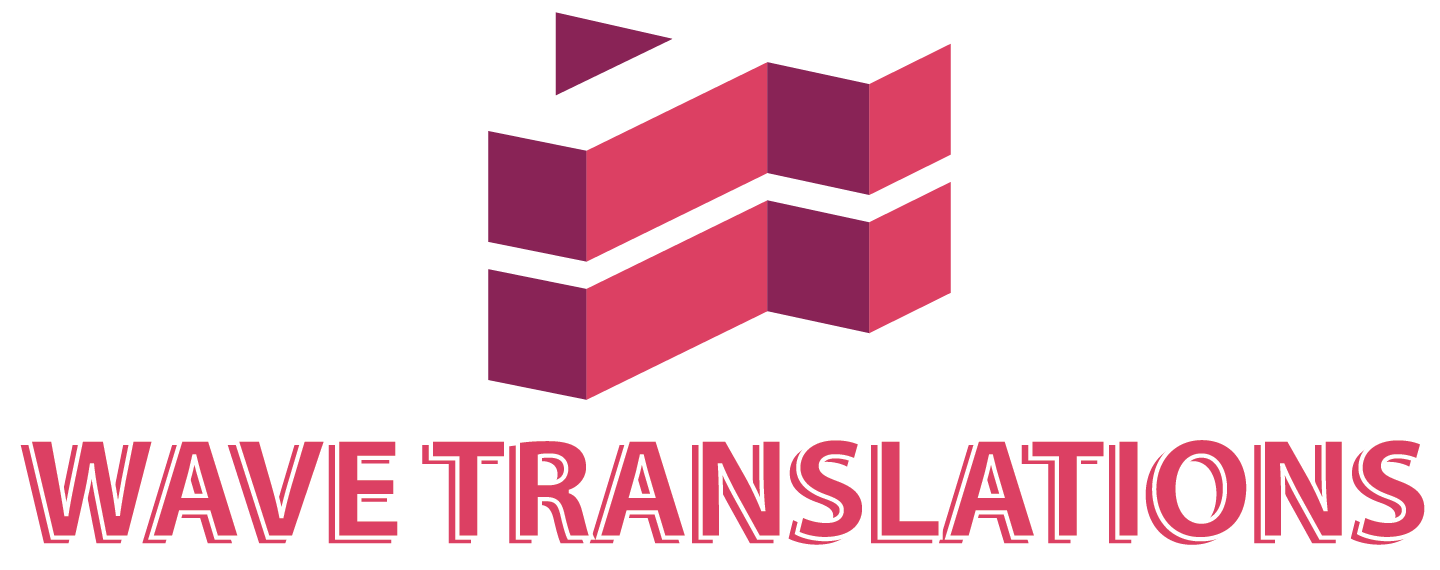Virtual interpreting is now a cornerstone of global interaction. Whether for healthcare, legal matters, or international conferences, the demand for seamless language solutions has rise exponentially. At Wave Translations, we’re here to guide you through the best practices for utilizing virtual interpreting services effectively.
The Rise of Virtual Interpreting
While the translation industry has always adapted to change, the shift toward virtual interpretation accelerated during the global pandemic. On-site interpreting faced challenges, but technology stepped in, offering robust alternatives like zoom interpretation and remote interpretation. These tools didn’t just fill a gap—they revolutionized accessibility.
For instance, healthcare providers urgently needed virtual interpreters to communicate with patients across language barriers. Meanwhile, businesses, on the other hand, turned to virtual interpreting solutions to host multilingual webinars and global team meetings. As a result, both sectors embraced technology to bridge communication gaps, ensuring efficient and effective interactions in critical environments. The result? An industry that’s faster, more flexible, and ready for the future.
| Metric | 2023 | 2032 (Projected) | CAGR | Key Drivers |
| Global Market Size | $18.25B | $27.26B | 5.90% | Globalization, immigration, AI integration |
| Remote Interpreting Platforms | $64.23B | $94.89B | 4.40% | Demand for real-time translation, hybrid work models |
Table 1: Virtual Interpreting Market Growth (2023–2032)
Types of Virtual Interpreting Solutions
Not all virtual interpreting events are the same. The right solution depends on your needs, audience, and context. Listed below are some of the common types of widely used virtual Interpreting solutions:
1. Over-the-Phone Interpreting (OPI)
OPI is the grandparent of remote interpretation. Using a phone line, interpreters facilitate conversations in real time, pausing to translate consecutively. It’s ideal for:
- Emergency hotlines
- Quick medical consultations
- Customer service calls
2. Video Remote Interpreting (VRI)
VRI adds a visual layer, connecting users via video. This is crucial for sign language interpretation or situations where body language matters. Think of a therapist conducting a session with a refugee family—VRI fosters empathy through face-to-face interaction.
Wave Translations often recommends VRI for industries like healthcare and education, where nuance can’t be lost.
3. Remote Simultaneous Interpreting (RSI)
RSI is the gold standard for large-scale virtual interpreting events. Interpreters translate in real time without pauses, making it perfect for:
- International conferences
- Live product launches
- Multi-stakeholder webinars
Platforms like Zoom, Kudo, and Interaction power these events. However, RSI requires meticulous planning.
| Region | Market Share (2023) | Projected Growth | Key Industries | Notable Trends |
| North America | 28% | 5.9% CAGR | Healthcare, Legal | Strict compliance mandates (e.g., HIPAA) |
| Europe | 35% | 6.2% CAGR | Government, Education | Refugee integration policies driving demand |
| Asia-Pacific | 21% CAGR | Fastest-growing | Medical tourism, Corporate | AI adoption in Japan, China’s cross-border trade |
| Middle East | Emerging | 10%+ CAGR | Oil & Gas, Hospitality | UAE’s multilingual workforce needs |
Table 2: Regional Adoption of Virtual Interpreting (2023–2030)
Key Factors to Consider When Selecting the Right Provider
Choosing the right partner for virtual interpreting services is critical. Here’s what to prioritize:
- Technological Authority: Ensure your provider uses cutting-edge platforms. Can they handle a 1,000-person webinar? Do they offer encrypted zoom interpretation for sensitive legal meetings?
- Translation Quality: Skilled virtual interpreters need industry-specific knowledge. A financial conference requires familiarity with niche like “blockchain” or “IPO.”
- Delivery & Communication: Share your timeline and materials early. A medical symposium’s agenda sent a week in advance helps interpreters prepare for terms like “myocardial infarction.”
Wave Translations, for instance, assigns dedicated project managers to streamline communication. Consequently, this ensures that no detail slips through the cracks, ultimately enhancing the overall efficiency of the process. Moreover, their proactive approach helps maintain smooth coordination, which is crucial for timely project delivery.

Blueprint for Achieving Success in Pre-Production
A successful virtual interpreting event starts long before the “Join Meeting” button is clicked. Use this checklist to prepare:
- Agenda & Content: Provide scripts, slides, and glossaries. If you’re discussing AI ethics, include definitions of key terms.
- Technical Specs: Confirm platform compatibility. Does your RSI tool support breakout rooms?
- Interpreter Briefing: Share speaker bios and cultural notes. A Japanese CEO’s speech might include polite honorifics needing careful translation.
Execution & Feedback
On the big day, trust your provider’s expertise. Wave Translations’ team monitors events in real time, troubleshooting issues like:
- Audio echoes during a remote interpretation session
- Delays in zoom interpretation breakout rooms
Afterward, provide feedback. Did the interpreter miss a regional dialect? Was the platform user-friendly? This loop ensures continuous improvement.

Virtual Interpreting Service Usage by Industry
The healthcare sector leads virtual interpreting adoption, with 45% of providers relying on Video Remote Interpreting (VRI) for telemedicine and patient consultations, driven by regulations like HIPAA and platforms like LanguageLine. Legal industries prioritize Remote Simultaneous Interpreting (RSI) (30% adoption), using tools like KUDO for cross-border depositions and virtual court hearings.
Corporate sectors, for instance, blend AI-human hybrid solutions (25%) via Zoom and Microsoft Teams to manage global conferences. In contrast, the education sector relies on On-Demand Phone Interpreting (OPI) (20%) from services like GLOBO to support international students. Consequently, these sectors leverage technology differently to address their unique needs, ensuring effective communication across diverse environments. With telemedicine and remote work expanding, demand is projected to grow by 18% annually through 2030.
| Benefit | Adoption Impact | Industries Reporting | Cost Savings |
| Cost Efficiency | 65% reduction in travel/logistics | Healthcare, Legal | $1.2M/year avg. for mid-sized firms |
| Scalability | 50% faster response times | Corporate, Education | — |
| Accessibility | 40% wider language coverage | Government, NGOs | — |
| Compliance | 95% adherence to regulations | Legal, Healthcare | Avoids $250K avg. fines |
Table 3: Key Benefits of Virtual Interpreting Services
Conclusion
Virtual interpreting solutions are here to stay, blending human expertise with digital innovation. By collaborating closely with your provider—sharing insights, materials, and feedback—you’ll unlock seamless communication.
At Wave Translations, we have a team of experts who offer exceptional virtual interpreting services. We work with native-speaking interpreters, have a tech-savvy team by your side, 24/7 Customer Support Virtual Assistants available to make sure your next event goes off without a hitch.
Contact Wave Translations today—where language meets innovation.
Frequently Asked Questions
What defines quality virtual interpreting services?
Quality virtual interpreting combines certified linguists, secure tech (like encrypted zoom interpretation), and cultural expertise to ensure accurate, real-time communication for your events.
How does remote interpretation differ from on-site?
Remote interpretation, for example, uses digital platforms (e.g., Zoom) instead of in-person presence, allowing for flexible and efficient communication across distances. It offers flexibility, cost savings, and instant access to global virtual interpreters.
Can virtual interpreting solutions handle large conferences?
Yes! Platforms like Zoom and Kudo support virtual interpreting events with 1,000+ attendees, multilingual channels, and breakout rooms for seamless communication.
Is zoom interpretation secure for confidential meetings?
Reputable providers use encrypted zoom interpretation tools and NDAs to protect sensitive data in legal, medical, or corporate virtual interpretation sessions.
What industries use virtual interpreting services most?
Healthcare, legal, education, and tech rely on virtual interpreters for patient consultations, depositions, multilingual classes, and global product launches.
How do I prepare for a virtual interpreting event?
Share agendas, glossaries, and speaker notes in advance. Test tech (sound, zoom interpretation links) to avoid delays during the live session.
Are virtual interpreters trained in specific dialects?
Yes! Providers like Wave Translations vet virtual interpreters for regional accents, slang, and industry jargon to ensure precise remote interpretation.
What’s the cost of virtual interpreting services?
Costs vary by duration, languages, and tech needs. Remote interpretation for short calls is affordable; complex virtual interpreting events require tailored quotes.
How fast can I book a virtual interpreter?
Various interpreting service providers, such as Wave Translations, offer 24/7 virtual interpreting services. Furthermore, they provide on-demand interpreters who are readily available within minutes. As a result, this makes them ideal for emergencies or last-minute meetings, ensuring quick and efficient communication when it matters most.


